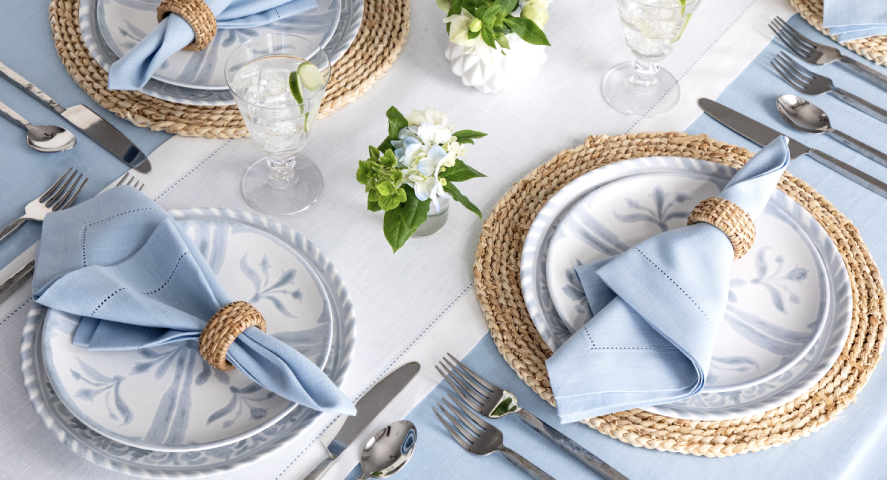Two of the most popular fabrics around these days – especially in warmer climates – are linen and cotton. Both are good to wear or have as bedding when it’s hot outside and you need a little cooling down – although one is better than the other. To find out which, read on…
What exactly is linen?
Linen is a lovely material to feel thanks to its initial crispness, then a softness as time goes on. Linen is a natural fibre which comes from the flax plant. The best flax is grown in Belgium with its cold climate and rich soil. The better quality the flax is, the better the linen it produces.
Linen is stronger than cotton
When it comes to weight, linen is heavier than cotton. It’s also stronger – around 200 per cent, in fact. Linen is a very durable material with plenty of lustre and a good drape. The thread count doesn’t need to be as high in linen as it is in cotton to get a quality fabric because the linen fibres are thicker (so less is necessary).
Linen is anti-allergenic
@thesleepjudge: “Linen sheets have unique filtering properties that can reduce the number of allergens and germs found in a typical set of bedsheets. With moisture reducing abilities and breathability, airflow through the sheets leaves them cool and dry no matter how long they are in use. This can reduce the recurrence of allergy symptoms or other respiratory problems.”
Linen has ‘wicking’ qualities
Linen’s secret to keeping its wearer – or indeed sleeper – cool is its ‘wicking’ qualities. It can actually wick away moisture, keeping the skin cool. Breathable linen fabric can also absorb up to 20 percent of its weight in moisture, guaranteeing a good night’s sleep. This is why in Asia, South America and other warmer climes, linen tends to be the fabric of choice for bedding and clothing.
And, talking of clothing, linen is a great material to wear when travelling because it’s lightweight, quick to dry and it doesn’t matter if there are creases as it’s all part of the linen look. It’s also anti-microbial and moths don’t like it (which is always a big plus!). Cotton clothing can become threadbare if washed too often, whereas linen just softens and becomes even more comfortable to wear.
What exactly is cotton?
Another natural plant fibre, cotton is derived from the cotton plant. Cotton fibres are soft and versatile. They’re also far fluffier than their linen counterparts.
Cotton can be made stronger by spinning and weaving several cotton fibres together to form a thicker cloth. In high thread counts, cotton feels beautifully soft and silky.
Cotton can actually absorb slightly more of its body weight in moisture than linen – 25 per cent. However, it doesn’t have linen’s wicking qualities. Having said that, cotton is still a good bedding material, being both breathable and absorbent. In colder months, two or three cotton sheets can be layered up to provide a warmer bedding cover.
Washing linen and cotton
Both fabrics can be washed in cold water – either by hand or machine washed on a low temperature. Cotton is slightly better at coping with warmer water. Both materials can also be tumble dried provided the dryer is switched to a low or medium heat.



















